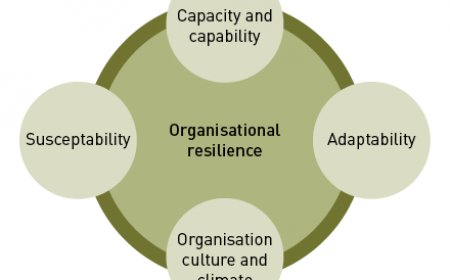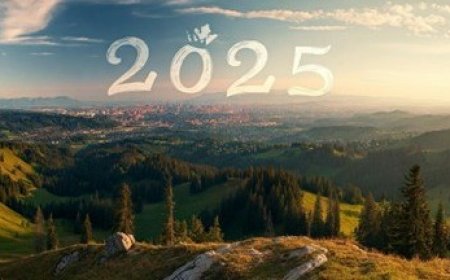Europe: Historic Sites and Architectural Marvels
Explore Europe’s historic sites and architectural marvels, from ancient ruins to modern masterpieces. Discover iconic landmarks, their histories, and why they remain timeless symbols of human achievement.
Europe, a continent steeped in history, is home to some of the world’s most iconic historic sites and architectural wonders. From ancient ruins to medieval castles, Renaissance palaces, and modern masterpieces, Europe’s built environment tells the story of human ingenuity, cultural evolution, and artistic brilliance. This article delves into the rich tapestry of Europe’s heritage, exploring its most significant landmarks, their historical contexts, and their enduring influence on global architecture and culture.
The Timeless Allure of European History
Why Europe Captivates the World
Europe’s historic sites and architectural marvels are not merely relics of the past; they are living testaments to centuries of innovation, artistry, and resilience. The continent’s diverse landscapes—from rolling hills to bustling cities—have been shaped by the hands of countless civilizations, each leaving behind a unique imprint. Whether it’s the grandeur of Gothic cathedrals or the intricate details of Baroque facades, Europe’s architecture reflects the values, beliefs, and aspirations of its people across time.
Key Factors Behind Europe’s Architectural Legacy
- Cultural Crossroads : Europe has long been a meeting point for different cultures, religions, and ideas, fostering a rich exchange of architectural styles.
- Technological Advancements : Innovations in engineering, materials, and design have allowed architects to push boundaries and create enduring structures.
- Historical Significance : Many sites are tied to pivotal moments in history, making them invaluable for understanding the development of societies.
"Europe’s historic sites and architectural marvels are more than just stone and mortar—they are stories etched in time."
Ancient Europe: Foundations of Civilization
Greece: The Cradle of Western Architecture
Ancient Greece laid the groundwork for much of Western architecture. Its emphasis on proportion, symmetry, and harmony continues to inspire designers today. Key examples include:
The Parthenon: A Symbol of Perfection
Located atop the Acropolis in Athens, the Parthenon is a masterpiece of classical Greek architecture. Built in the 5th century BCE as a temple to Athena, it exemplifies the Doric order with its sturdy columns and intricate friezes. Despite damage from wars and natural disasters, the Parthenon remains an enduring symbol of democracy and artistic achievement.
Architectural Features of the Parthenon
- Columns : The Parthenon features 46 outer columns arranged in precise rows, creating a sense of balance and stability.
- Optical Refinements : Subtle curves and adjustments were made to counteract visual distortions, ensuring the structure appears perfectly straight.
- Sculptural Decorations : Metopes and pediments depict mythological scenes, reflecting the Greeks’ reverence for their gods.
Other Notable Greek Sites
- Epidaurus Theatre : Renowned for its acoustics, this ancient amphitheater could seat up to 14,000 spectators. Its design ensures that even whispers on stage can be heard in the back rows.
- Delphi : Once considered the center of the world, Delphi housed the Oracle and featured stunning temples dedicated to Apollo. Pilgrims traveled from across the Mediterranean to seek guidance here.
Rome: Engineering Feats and Imperial Grandeur
The Roman Empire left an indelible mark on Europe through its monumental architecture and engineering prowess. Roman innovations such as concrete, arches, and domes revolutionized construction techniques.
Colosseum: Arena of Glory
The Colosseum in Rome stands as a testament to Roman engineering and entertainment culture. Completed in 80 CE, this massive amphitheater could hold over 50,000 spectators who gathered to watch gladiatorial contests and public spectacles. Its tiered seating, complex underground passages, and advanced ventilation systems showcase the sophistication of Roman design.
Engineering Marvels of the Colosseum
- Concrete Construction : Romans pioneered the use of concrete, allowing them to build larger and more durable structures.
- Hypogeum : Beneath the arena floor lies a labyrinth of tunnels where animals, gladiators, and stagehands prepared for events.
- Velarium : A retractable awning provided shade for spectators during performances.
Pantheon: A Dome That Defies Time
The Pantheon , originally built as a temple to all gods, is renowned for its massive dome and oculus. Constructed around 126 CE, it remains one of the best-preserved ancient Roman buildings and serves as a model for countless domed structures worldwide.
Innovative Design Elements
- Oculus : The central opening allows light to illuminate the interior while reducing structural weight.
- Rotunda : The circular shape distributes stress evenly, contributing to the building’s longevity.
- Materials : The use of lightweight pumice in the upper sections of the dome demonstrates advanced knowledge of material properties.
Medieval Europe: Castles, Cathedrals, and Fortresses
Castles: Strongholds of Power
During the Middle Ages, castles were both defensive fortifications and symbols of authority. These imposing structures dotted the European landscape, serving as residences for nobility and centers of governance.
Neuschwanstein Castle: A Fairytale Fortress
Perched atop a hill in Bavaria, Neuschwanstein Castle is often cited as the inspiration for Disney’s Sleeping Beauty Castle. Commissioned by King Ludwig II of Bavaria in the 19th century, this romanticized structure blends medieval aesthetics with modern comforts, offering breathtaking views of the surrounding Alps.
Romanticism in Architecture
- Exterior Design : Towers, turrets, and battlements evoke a sense of chivalry and fantasy.
- Interior Artwork : Murals depict scenes from Wagnerian operas, reflecting Ludwig’s passion for music and drama.
- Modern Amenities : Despite its medieval appearance, the castle included cutting-edge technology like running water and flush toilets.
Edinburgh Castle: A Bastion of Scottish History
Dominating the skyline of Scotland’s capital, Edinburgh Castle has witnessed centuries of conflict and royalty. Its strategic location atop Castle Rock made it nearly impregnable, while its storied halls house treasures like the Crown Jewels of Scotland.
Historical Highlights
- Wars of Independence : The castle played a key role in Scotland’s struggle against English domination.
- Mons Meg : A massive siege cannon gifted to James II in 1457, now displayed within the fortress.
- One O’Clock Gun : A daily tradition since 1861, signaling the time to ships in the Firth of Forth.
Cathedrals: Spiritual and Artistic Masterpieces
Medieval Europe saw the rise of Gothic architecture, characterized by pointed arches, ribbed vaults, and flying buttresses. Cathedrals became not only places of worship but also showcases of artistic ambition.
Notre-Dame de Paris: A Gothic Icon
Notre-Dame Cathedral , begun in 1163, epitomizes Gothic architecture with its soaring spires, intricate rose windows, and gargoyles. Although damaged by fire in 2019, restoration efforts aim to preserve this beloved landmark for future generations.
Architectural Innovations
- Flying Buttresses : External supports allowed builders to construct taller walls and larger windows.
- Stained Glass Windows : Vibrant depictions of biblical stories illuminated the interior with colored light.
- Gargoyles : Grotesque figures served both decorative and functional purposes, channeling rainwater away from the walls.
Chartres Cathedral: A Pilgrim’s Paradise
Renowned for its stained glass windows and labyrinthine floor, Chartres Cathedral in France is a UNESCO World Heritage Site. Its luminous interiors and celestial themes reflect the spiritual fervor of the medieval period.
Symbolism in Design
- Blue Virgin Window : One of the oldest surviving stained glass panels, depicting the Virgin Mary.
- Labyrinth : A winding path embedded in the floor invites visitors to meditate and reflect on their journey.
- Relics : The cathedral houses the Sancta Camisa, believed to be the tunic worn by Mary during Christ’s birth.
Renaissance Europe: Rebirth of Art and Architecture
Florence: The Heart of the Renaissance
Italy was the epicenter of the Renaissance, a cultural movement that revived classical ideals and sparked unprecedented creativity. Florence, in particular, boasts numerous architectural gems inspired by this era.
Santa Maria del Fiore: A Dome That Dazzles
The Florence Cathedral , crowned by Filippo Brunelleschi’s revolutionary dome, is a triumph of Renaissance engineering. Completed in 1436, the dome remains the largest masonry dome ever built without scaffolding.
Brunelleschi’s Genius
- Double Shell Structure : An inner and outer layer provides strength while reducing weight.
- Herringbone Pattern : Bricks were laid in a crisscross pattern to prevent slippage during construction.
- Lantern : A decorative cap atop the dome adds height and elegance.
Palazzo Vecchio: Power and Prestige
This fortress-like palace served as Florence’s town hall and symbolized civic pride. Its robust exterior contrasts with opulent interiors adorned with frescoes and sculptures.
Artistic Treasures
- Salone dei Cinquecento : A grand hall featuring frescoes by Vasari and Michelangelo-inspired designs.
- Judith and Holofernes : A statue by Donatello representing justice and tyranny.
- Tower of Arnolfo : Offers panoramic views of the city below.
St. Peter’s Basilica: A Papal Masterpiece
Located in Vatican City, St. Peter’s Basilica is one of Christianity’s holiest sites and a pinnacle of Renaissance architecture. Designed by luminaries like Michelangelo and Bernini, it features a majestic dome, intricate mosaics, and the iconic Pietà sculpture.
Collaborative Effort
- Michelangelo’s Dome : Inspired by the Pantheon, it dominates the skyline and symbolizes divine connection.
- Bernini’s Baldachin : A towering bronze canopy marks the high altar above St. Peter’s tomb.
- Pietà : Carved when Michelangelo was just 24, this masterpiece captures profound emotion and technical skill.
Baroque and Rococo: Extravagance and Ornamentation
Versailles: The Epitome of Opulence
The Palace of Versailles , commissioned by Louis XIV, embodies the extravagance of the Baroque style. Its Hall of Mirrors, sprawling gardens, and lavish apartments reflect the Sun King’s desire to project absolute power.
Design Details
- Hall of Mirrors : Seventeen mirrored arches reflect sunlight into the gallery, creating a dazzling effect.
- Gardens : Designed by André Le Nôtre, they feature fountains, groves, and geometric patterns.
- Royal Apartments : Each room is themed after a deity, showcasing Louis XIV’s divine right to rule.
Würzburg Residence: A Symphony in Stone
In Germany, the Würzburg Residence exemplifies Rococo elegance with its gilded stucco work, frescoed ceilings, and harmonious proportions. Designed by Balthasar Neumann, it is considered one of Europe’s finest palaces.
Artistic Flourishes
- Tiepolo Frescoes : Ceiling paintings depict allegories of Europe and the continents.
- White Hall : A highlight of the residence, known for its intricate carvings and light-filled ambiance.
- Garden Pavilion : Offers serene views of the surrounding vineyards.
Modern and Contemporary Europe: Innovation Meets Tradition
Eiffel Tower: An Iron Icon
Completed in 1889 for the Exposition Universelle, the Eiffel Tower initially faced criticism but soon became a global symbol of Paris and modernity. Its lattice structure and use of wrought iron marked a departure from traditional materials.
Structural Innovations
- Wind Resistance : Gustave Eiffel’s calculations ensured stability against strong winds.
- Elevators : Advanced hydraulic systems allowed visitors to ascend safely.
- Lighting : Thousands of bulbs illuminate the tower at night, creating a magical spectacle.
Guggenheim Museum Bilbao: A Modern Marvel
Designed by Frank Gehry, the Guggenheim Museum Bilbao redefined contemporary architecture with its undulating titanium curves and innovative design. It has revitalized the city’s economy and put Bilbao on the map as a cultural destination.
Architectural Breakthroughs
- Titanium Cladding : Reflects light differently throughout the day, giving the building a dynamic appearance.
- Public Spaces : Open areas invite interaction and engagement with art beyond the galleries.
- Environmental Integration : The museum complements the riverfront setting, blending seamlessly with its surroundings.
Preservation Efforts and Challenges
Protecting Europe’s Heritage
While Europe’s historic sites attract millions of visitors annually, they face threats from urbanization, pollution, and climate change. Preservation efforts involve meticulous restoration, sustainable tourism practices, and international collaboration.
UNESCO World Heritage Sites
Over 400 locations in Europe are designated as UNESCO World Heritage Sites, ensuring their protection and recognition. Examples include Venice, the Alhambra, and Stonehenge.
Challenges and Solutions
- Urban Development : Balancing growth with conservation requires strict zoning laws and community involvement.
- Climate Change : Rising sea levels threaten coastal sites like Venice, necessitating adaptive measures.
- Tourism Pressure : Implementing visitor limits and promoting off-season travel helps reduce wear and tear.
Tips for Exploring Europe’s Architectural Wonders
- Plan Ahead : Research opening hours and ticket availability for popular sites.
- Guided Tours : Opt for expert-led tours to gain deeper insights into each location’s history.
- Respect Local Rules : Follow guidelines to help preserve these fragile treasures.
- Visit Off-Peak : Avoid crowds by traveling during shoulder seasons or early mornings.
- Document Your Journey : Capture memories responsibly, avoiding flash photography in sensitive areas.
Comparison Table: Architectural Styles Across Europe
Review: Verdict on Europe’s Architectural Legacy
Europe’s historic sites and architectural marvels are unparalleled in their diversity and significance. They offer a window into the past while inspiring future generations of architects, historians, and travelers. By preserving these treasures, we honor the legacy of those who came before us and ensure that their stories continue to resonate.
Conclusion
Europe’s architectural heritage is a testament to humanity’s boundless creativity and perseverance. From the ancient ruins of Greece to the futuristic designs of Bilbao, the continent’s landmarks encapsulate centuries of progress and imagination. As custodians of this legacy, it is our duty to protect and celebrate these wonders for posterity.
10 FAQs About European Historic Sites
-
What is Europe’s oldest surviving building?
- The Minoan Palace of Knossos in Crete dates back to around 1700 BCE.
-
Which European cathedral has the tallest spire?
- Ulm Minster in Germany holds this distinction at 161.5 meters.
-
How old is Stonehenge?
- Stonehenge is approximately 5,000 years old.
-
Who designed St. Peter’s Basilica?
- Multiple architects contributed, including Michelangelo and Bernini.
-
What makes Neuschwanstein Castle famous?
- It inspired Disney’s Sleeping Beauty Castle and represents Romanticism in architecture.
-
Is the Eiffel Tower structurally sound?
- Yes, its innovative design ensures stability despite its height.
-
How many UNESCO sites are in Europe?
- Over 400 sites span the continent.
-
Can I climb the Eiffel Tower?
- Visitors can ascend via stairs or elevators, depending on the level.
-
What caused the fire at Notre-Dame?
- Investigations suggest electrical issues may have sparked the blaze.
-
How do I visit the Alhambra?
- Advance booking is essential due to high demand and limited entry slots.
What's Your Reaction?
 Like
0
Like
0
 Dislike
0
Dislike
0
 Love
0
Love
0
 Funny
0
Funny
0
 Angry
0
Angry
0
 Sad
0
Sad
0
 Wow
0
Wow
0










































